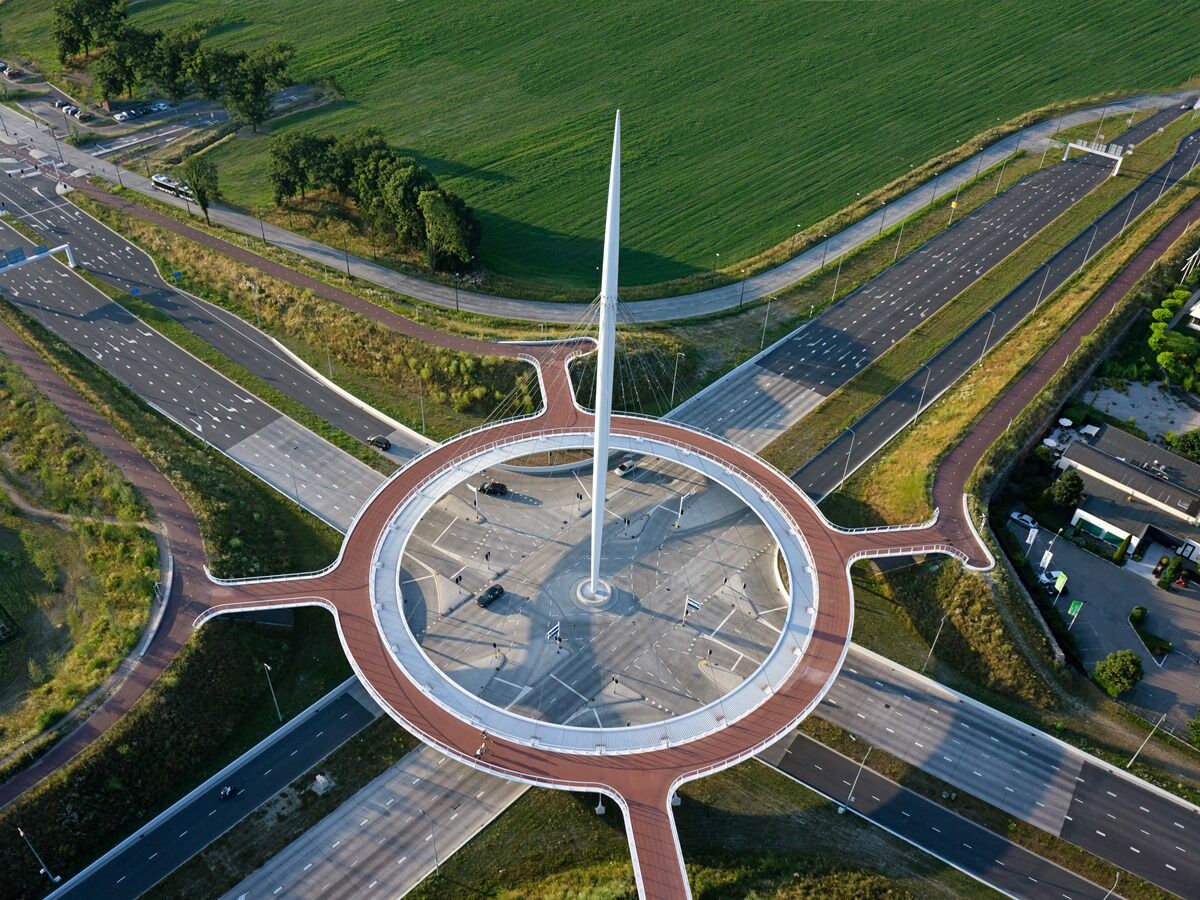Hovenring, Eindhoven
The world's first 'floating' roundabout for bicycles

The world's first 'floating' roundabout contributes to the transformation of the infrastructure of the Eindhoven region. Motorised vehicles pass under the roundabout, while the floating part is for cyclists and pedestrians.
The City of Eindhoven anticipates that its traffic volume will increase in the coming years. To optimise traffic flow and safety, the existing roundabout was converted into an intersection with a special bicycle roundabout above it.
FLOATING CONSTRUCTION
The roundabout hangs freely from the ground and is attached to a single pylon in the centre of the roundabout. The circular bridge deck with a diameter of 75m is supported by 24 cables attached to the cigar-shaped pylon.
LIGHTING
At night, the bridge structure is illuminated by LED lighting units that are incorporated at various points in the bridge deck and in the pylon, giving the impression that the bridge is actually floating.
STEEL PYON
The 70m high cigar-shaped pylon was produced by Kersten and consists of 23 conical segments with a plate thickness varying from 20 to 50mm. Kersten provided the engineering, cut the conical segments out of steel plates, rolled them and welded the longitudinal seams with 100% certification.
At the points where the cables come together, slotted holes of 375x185mm were made on the inside of the pylon.
The Hovenring was opened in 2012. The design was created by IPV Delft.
Photo credits: ipv Delft (www.ipvdelft.com)